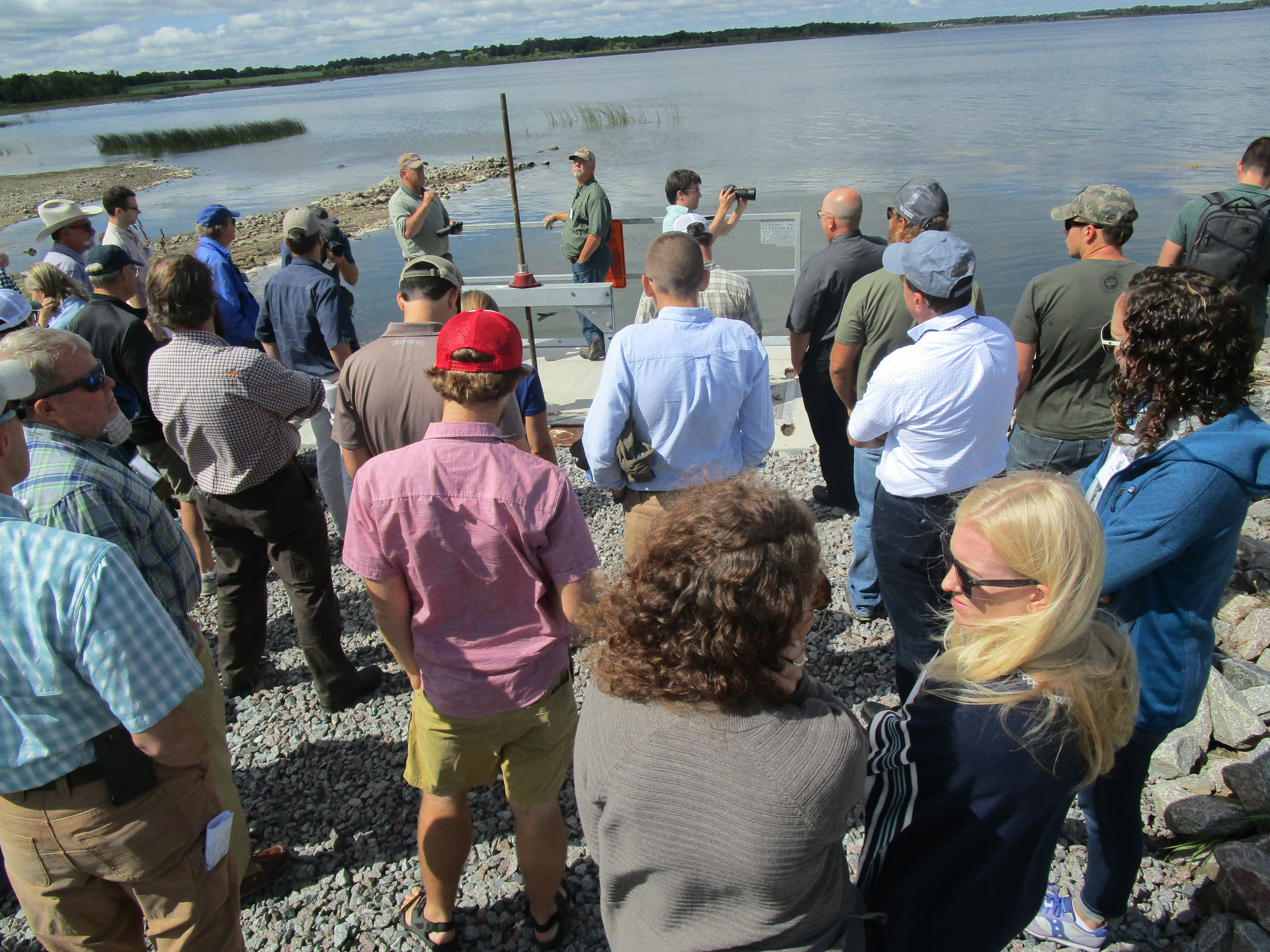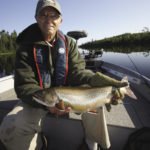Writers gathered in Minneapolis last week for the Theodore Roosevelt Conservation Partnership’s annual western media summit, which this year covered the upcoming 2018 reauthorization of the federal Farm Bill. Minnesota was an excellent location for the summit, given the state’s deep commitment to conservation and habitat restoration. Many conservation projects are accomplished either through or in tandem with Farm Bill programs.
Evidence of that work can be found on the edge of the city. On the first day of the summit, the writers toured Pelican Lake, where multiple projects to restore habitat and improve water quality on this important stopover for migrating waterfowl. Along the way, the writers heard from biologists and others from federal, state and county agencies, as well as from Ducks Unlimited and Pheasants Forever. Most importantly, they visited local farmers and landowners who provided local insight regarding conservation and related farm programs.
In all, it was an excellent tour; and I said so to TRCP executive director Whit Fosborough. He replied that credit was due to TRCP’s Minnesota partners, adding, “This state has its act together.”
That got me thinking. Over the years, I’ve participated in many tours such as this one in every corner of Minnesota. Conservation work occurs just about everywhere. This is a strong testament to not only our incredible wealth of natural lands and public waters, but also to our collective efforts to maintain a healthy landscape. Not every state is so lucky.
Beyond these efforts, what we really need now for farmland wildlife conservation is grass; lots of it. Not just in Minnesota, but across the Upper Midwest. The Farm Bill’s Conservation Reserve Program, which pays farmers to grow grass instead of row crops on erodible and less productive lands, has dwindled from a high of nearly 38 million acres in 2007 to about 24 million acres today. The rallying cry for the 2018 Farm Bill is 40 million acres, although discussion at the summit indicated achieving 30 to 32 million acres seems more realistic.
The challenges to progress are many. Although the Farm Bill is the nation’s largest private lands conservation initiative, fully 80 percent of the bill’s funding goes to the SNAP (food stamp) program. Linking farming to food assistance in the Farm Bill has proven an effective way to engage urban and rural politicians in related and essential domestic programs. Given the fiscal realities of the current political climate, achieving any increase will be difficult. This is compounded by competing agendas among the conservation interests and competing conservation programs within the Farm Bill. When there is a finite amount of money to go around, deciding how to spend it may be a very messy affair.
From a perspective of acute self-interest, the outcome of CRP in the Farm Bill may make or break pheasant hunting as we know it in the Upper Midwest. Severe drought and, more importantly, drastic habitat loss (including 580,000 CRP acres since 2007) caused South Dakota’s roadside pheasant count to drop 45 percent from 2016. Favorable weather conditions in the future may allow the population to bounce back out there in the Pheasant Capitol of the World, but let’s face it: pheasant abundance and hunting success has continued declining in recent years as land has left CRP and converted to row crop production. We need grass; lots of it.
It is not a stretch to say farmers and pheasant hunters are about the only folks who know about and appreciate the CRP program. Yet grassland conservation provides broad benefits by preventing wind and water erosion, filtering runoff and creating habitat for pollinators and all manner of wildlife. Enrolling lands in CRP can lead to measurable improvements in water quality. Relevant to everyone living in or downstream from the Upper Midwest, this story needs to be told to a broader audience.
How to reach out to that audience was a topic of discussion among the writers. Many, though not all, wrote primarily for hunting and fishing audiences. Although the discussion included some angst about prevalence of “old white men” in conservation, it is fair to say all of the writers in the room were either in that category or putting in their time to reach that status. Within the realm of hunting and conservation, that’s pretty much how it goes.
During the course of the summit, I observed a couple of generalities about this group of communicators. For instance, some seemed a little quick to judge other participants in outdoor recreation, namely those who may hike and bike, but don’t hunt and fish. The rub seems to be a belief that “the other ones” aren’t paying their fair share to support wildlife conservation. There is some truth to this, but it seems unlikely that hunters will form effective and necessary alliances with other outdoor users by continually grousing about who pays what in conservation.
I also sensed among some communicators a timidity in speaking truth to power. When it comes to political parties and politicians, sometimes you have to name names. I think back to the late Tony Dean, the South Dakota writer, radio and television personality who had the courage and conviction to speak truth to power even when doing so led to efforts to discredit him with his advertisers. Tony was a fan of CRP and any conservation program that protected or improved his beloved prairie. He knew we needed grass; lots of it. And back when he was extolling the importance of grassland conservation, we had it. Perhaps that wasn’t a coincidence.





